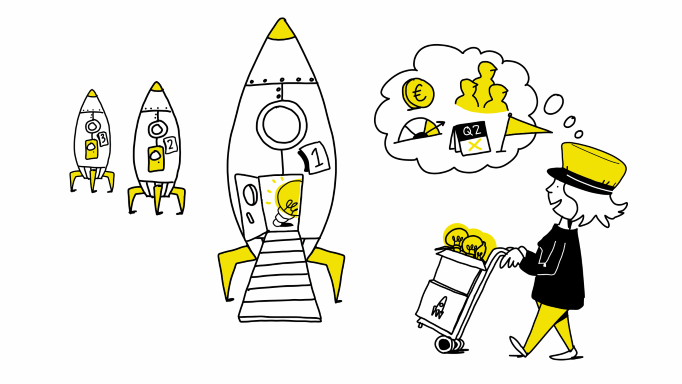In the spring of 2021, Kasvuryhmä was focusing on growth seeds, namely on how to systematically identify and process new growth opportunities. The members of Kasvuryhmä carried out peer-to-peer sparring aimed at identifying new opportunities and assessing the potential of growth seeds. Together with 124 companies and 190 participants, we carried out a total of almost 1.5 months of round-the-clock peer-to-peer sparring!
A growth company rarely suffers from a shortage of ideas, but the challenging part is selecting the best growth projects in each moment and implementing them successfully. How can you make the difficult decision of what to truly invest in? How can you ensure successful implementation?
SELECTION AND QUICK START OF GROWTH PROJECTS
Only the most promising seeds will be implemented as growth projects. Each company will have its own selection criteria on the basis of which various growth seeds will be evaluated. What can be defined as more promising for one company may be less so for another due to different goals, resources, and capabilities. Every company should identify the types of growth seeds with which they have the highest possible chance of succeeding.
Test your growth project:
- It is in line with the company’s aims while moving towards the Outrageous Promise:
- It is brave: It will contribute to innovating your business model
- It is in itself a source of strong growth (15+%), not just a growth-enhancing activity, small increase in efficiency or other type of improvement
Launching a new growth project requires funding, resources, ongoing monitoring, and possibly new skills. How can you find resources for your growth project? What kind of investments will the growth project require and what kinds of changes might this mean to the company’s ownership and capital structure? How can you identify what capabilities you need for implementing a certain growth project? How will you know if your growth project is heading in the right direction and how can you change its course or abandon it if it isn’t going according to plan?
MANAGEMENT OF GROWTH PROJECTS
The leap from ideas to implementation requires hard work and planned management. What kind of management systems are the most optimal for supporting growth and the implementation of growth projects? How can you develop your growth capabilities? How can you create a culture of growth and inspire people? What can you learn from the successful and unsuccessful growth projects of other scaleups?
Find out more about the Kasvuryhmä method






